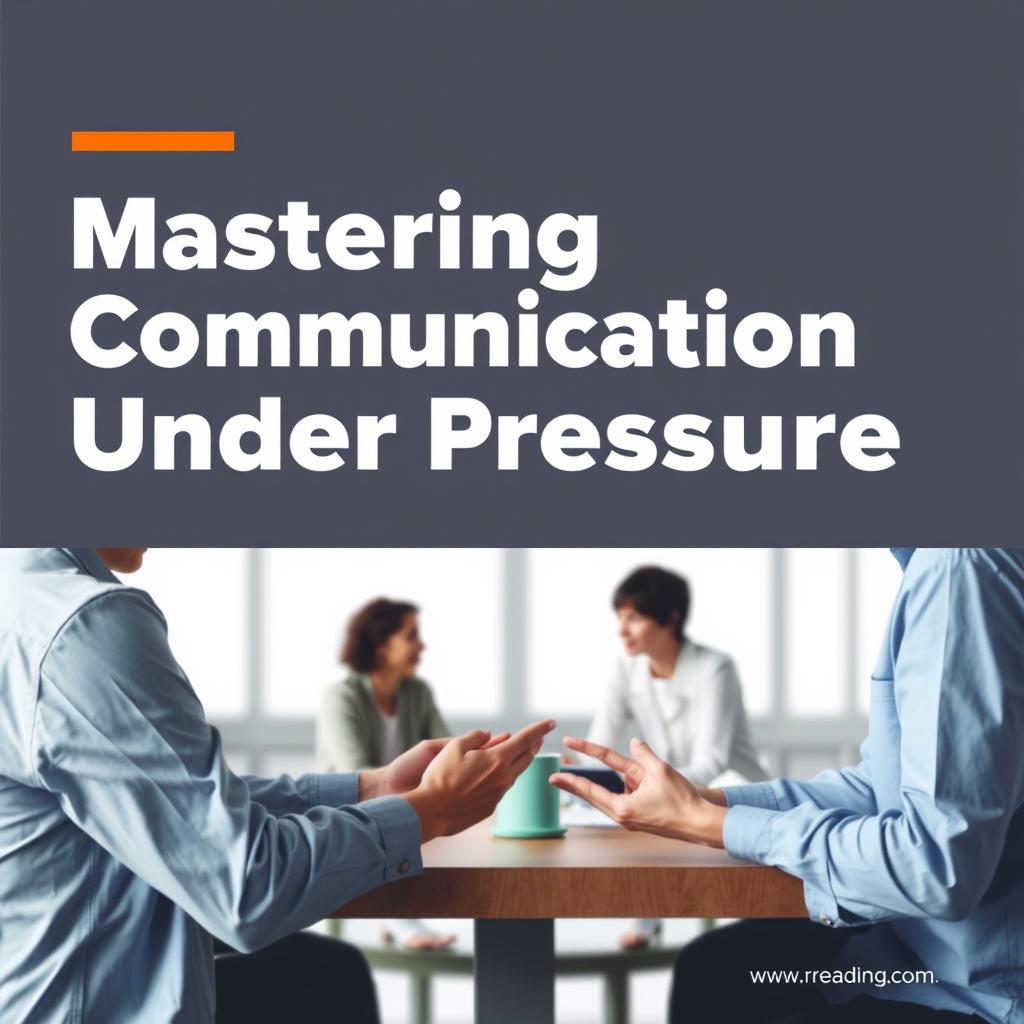Mastering Communication Under Pressure: Best Practices for Consistency and Clarity
Estimated reading time: 8 minutes
- Establish clear communication protocols to enhance team alignment.
- Practice mindfulness to improve emotional regulation during stressful moments.
- Prioritize and delegate effectively to manage workloads and maintain quality.
- Foster open communication to address issues proactively and build team morale.
- Control pacing and volume to project calmness and professionalism.
Table of Contents
- Establishing Clear Communication Protocols
- Practicing Mindfulness and Emotional Regulation
- Prioritizing and Delegating Effectively
- Fostering Open Communication
- Defining Brand Voice and Tone
- Controlling Pacing and Volume
- Seeking Support
- The High Cost of Inconsistency
Establishing Clear Communication Protocols
Imagine an orchestra performing without a conductor or score—complete chaos ensues. Just like a symphony, effective team collaboration requires clear communication protocols. By establishing guidelines, teams ensure everyone is aligned and working harmoniously, even under tight deadlines.
Key Protocols to Implement:
- Consistent Terminology: Create a glossary of key terms to standardize language across all communications, ensuring that everyone is on the same page.
- Style Guidelines: Define visual aspects of communication. Elements such as standardized email signatures and presentation templates enhance both professionalism and brand identity.
- Pre-Approved Messaging: Develop templates for common scenarios—like crisis communications or status updates—that maintain a consistent tone and prevent time-consuming re-writes.
Practicing Mindfulness and Emotional Regulation
When the pressure mounts, our minds can become chaotic, much like a shaken soda bottle—ready to burst. Embracing techniques for mindfulness and emotional regulation can be our valve to release that pressure.
Techniques for Mindfulness:
- Deep Breathing: Simple yet powerful, a few deep breaths can slow your heart rate and clear your mind.
- Meditation: Incorporate regular meditation sessions to cultivate calmness and perspective, enabling you to respond rather than react during stressful periods.
- Short Breaks: Taking brief, intentional breaks to step away from your desk can significantly enhance your mental clarity. A quick stretch or conversation with a coworker can provide a refreshing reset.
Prioritizing and Delegating Effectively
Trying to juggle too many tasks at once is a recipe for burnout. Effective delegation and prioritization are essential for maintaining momentum and quality in your work.
Strategies for Prioritization:
- Identify Critical Tasks: Utilize frameworks like the Eisenhower Matrix to know what’s urgent and important, allowing you to prioritize effectively.
- Delegate Wisely: Assign tasks based on team members’ strengths, fostering collaboration while easing individual workloads.
- Time Blocking: Allocate distinct time slots for specific activities to help maintain focus and ensure tasks are completed without overlap.
Fostering Open Communication
Creating a culture of open communication is vital for teams to navigate challenges together. When individuals feel free to express concerns, issues can be addressed proactively.
Fostering Open Dialogue:
- Regular Check-Ins: Schedule brief meetings to discuss progress and roadblocks, ensuring everyone is aligned and informed.
- Feedback Mechanisms: Implement systems for constructive feedback that can help steer teams toward improvement and align understanding.
- Psychological Safety: Cultivate an environment where team members can voice ideas and concerns without fear of judgment, which fosters mutual respect and creativity.
Defining Brand Voice and Tone
A clear brand voice is fundamental to effective communication. It ensures consistency across messaging and reinforces brand identity.
Establishing Your Brand Voice:
- Identify Your Audience: Understand who you’re communicating with and tailor your language accordingly to resonate deeply with them.
- Clarify Core Values: Ensure all communications reflect your brand’s core values for authenticity and trust-building.
- Provide Scenarios: Share specific examples of language and tone suitable for various contexts, aiding team members in maintaining brand consistency.
Controlling Pacing and Volume
Effective communication is not solely built on what you say but also how you express it. Mindful pacing and volume can project calm and professionalism, helping to alleviate anxiety.
Communication Techniques:
- Slow Down: Consciously pace your speech to project confidence and clarity.
- Volume Modulation: Maintain consistent volume to enhance understanding and engagement during interactions.
- Strategic Pauses: Use pauses to emphasize critical points, allowing the audience to process your message.
Seeking Support
No one is an island; encouraging team members to seek support can significantly improve the quality of communication and overall team morale.
Support Mechanisms to Consider:
- Mentorship Programs: Pair less experienced members with seasoned professionals to provide guidance and support.
- Counseling Services: Facilitate access to professional counseling for team members to manage stress and anxiety better.
- Peer Support: Encourage a culture where colleagues can support one another through shared conversations, allowing for a sense of community.
The High Cost of Inconsistency
Inconsistent communication doesn’t just cause minor setbacks—it can be a significant liability. Research shows that inconsistent messaging can diminish brand credibility by more than 50%. The implications are severe, leading to lost customers and a tarnished reputation.
| Area | Impact of Inconsistent Communication |
|---|---|
| Brand Credibility | Decrease by over 50% |
| Customer Trust | Erodes, leading to churn |
| Internal Cohesion | Confusion and misalignment |
| Productivity | Reduced efficiency and increased errors |
| Professional Relationships | Strained relations, hinders collaboration |
Ultimately, maintaining tonal consistency under pressure is more than a matter of decorum—it’s a strategic necessity. By implementing clear communication protocols, practicing mindfulness, prioritizing effectively, and fostering open dialogue, individuals and organizations can navigate deadlines while ensuring professional and consistent messaging.
However, in our pursuit of clarity, we must also be wary of stifling creativity and authenticity. The goal is not to eliminate inconsistency altogether but to embrace it as part of our shared humanity, aiming for clarity and authenticity in every interaction. The delicate balance between structure and spontaneity is where true communication mastery lies.
Get Started with Better Communication Today!
At professionalizeitto.me, we empower you to elevate your written communications, ensuring clarity, confidence, and personality shine through in every message you convey.
Action Steps:
- Subscribe to Our Newsletter: Receive regular tips and insights on professional communication.
- Book a Consultation: Tailor your approach with our personalized guidance.
- Access Premium Resources: Enhance your skills with our exclusive tools and templates.
Embark on your journey toward mastering professional communication. Connect with us today and revolutionize your communication strategies!
Frequently Asked Questions
- What is the importance of consistent communication?
- Consistent communication fosters trust and clarity, essential for successful professional relationships.
- How can I improve my communication under pressure?
- Practicing mindfulness, establishing protocols, and fostering a culture of open dialogue can enhance communication effectiveness during stressful times.
- What techniques can help manage stress during communication?
- Deep breathing, meditation, and regular breaks are practical techniques for managing stress and improving clarity.
Harness the power of effective communication with professionalizeitto.me today!

